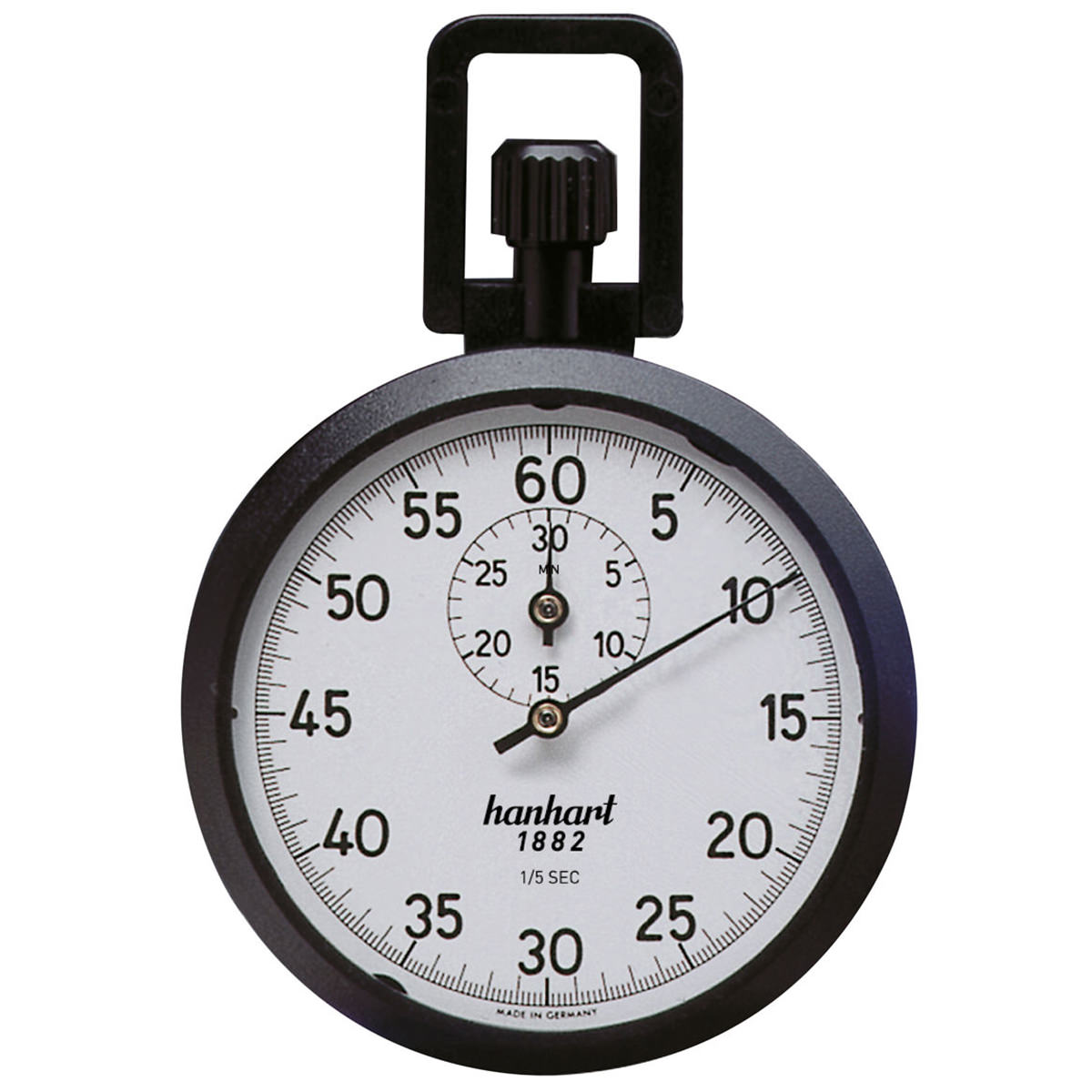29 May 2025
How they work
A mechanical stopwatch operates through a series of precisely engineered components that work together to measure elapsed time without the need for batteries. Here’s a concise breakdown of its core mechanisms:
• Mainspring: A coiled spring that stores energy when wound manually. This energy powers the entire mechanism.
• Gear Train: A sequence of gears that transmit the stored energy from the mainspring to the escapement, regulating the movement of the hands.
• Escapement: This component controls the release of energy from the mainspring, ensuring consistent movement. It interacts with the balance wheel to maintain accurate timing. 
• Balance Wheel: A weighted wheel that oscillates back and forth, dividing time into equal segments. Its regular motion is crucial for timekeeping accuracy.
• Hands and Dial: The visible part of the stopwatch, where the hands move over a marked dial to display the measured time.
• Control Buttons: Typically, there are buttons to start, stop, and reset the stopwatch. Pressing these engages or disengages the gear train and resets the hands to zero.
In operation, once the mainspring is wound, releasing it allows the stored energy to flow through the gear train, regulated by the escapement and balance wheel, causing the hands to move at a steady rate. Pressing the control buttons manipulates this flow, enabling precise measurement of time intervals. 
Flyback
A “flyback” is a mechanical stopwatch feature that allows you to reset and restart the timer with a single press of a button, without needing to stop it first. This function is particularly useful for timing consecutive events quickly and accurately.  
Traditionally, to time successive intervals, you would have to stop the stopwatch, reset it to zero, and then start it again—three separate actions. With a flyback mechanism, pressing the designated pusher (often located at the 4 o’clock position) instantly resets the hands to zero and restarts the timing, streamlining the process. 
This feature was originally developed for pilots in the early 20th century, enabling them to measure flight segments more efficiently. 
In summary, a flyback stopwatch enhances usability by combining the stop, reset, and start functions into a single action, making it ideal for scenarios requiring rapid, successive timing. 
Brands & models
Here’s a brief overview of the two companies behind the high-quality stopwatches you’re considering:
⸻
Hanhart
Founded in 1882 by Johann Adolf Hanhart in Diessenhofen, Switzerland, Hanhart relocated to Schwenningen, Germany, in 1902. In 1924, Wilhelm Julius Hanhart introduced the world’s first affordable mechanical stopwatch, addressing the scarcity and high cost of Swiss timepieces at the time . Hanhart became renowned for its precision instruments, including pilot chronographs like the Caliber 40 in 1938. Today, based in Gütenbach, Germany, Hanhart continues to produce mechanical and electronic stopwatches, serving sectors such as sports, automotive, and laboratories .   
⸻
TFA Dostmann
Established in 1964 by Heinz Dostmann in Kreuzwertheim, Germany, TFA Dostmann began as a manufacturer of technical valves and soon patented a maximum-minimum thermometer inspired by James Six’s 1782 invention . Over the years, the family-run company expanded its product range to include over 1,000 measuring instruments, such as thermometers, hygrometers, weather stations, and stopwatches. TFA Dostmann is recognized for its reliable and affordable timing devices, catering to both professional and consumer markets .  
⸻
Both Hanhart and TFA Dostmann are German companies with longstanding histories in precision timekeeping. Hanhart offers high-end, historically significant mechanical stopwatches, while TFA Dostmann provides practical and accessible timing solutions.
For superior haptic feedback in a mechanical stopwatch, the Hanhart Amigo 1/10-Sek. 15Min stands out. Users praise its crisp button action and tactile satisfaction, attributing this to Hanhart’s precision engineering and durable construction.
Alternatively, the TFA Dostmann 38.1022 offers a solid build with a 13-jewel movement and stainless steel case. While its haptic feedback is commendable, it may not match the tactile excellence of the Hanhart. 
If haptic quality is your priority, the Hanhart Amigo is the recommended choice. 
Hanhart

Hanhart Amigo 1/5 Sek. mit Flyback
163 EUR


Hanhart Kronenstopper im ABS-Gehäuse 1/5 Sek.
222 EUR


Hanhart Additionsstopper 1/5 Sek.
321 EUR


TFA
TFA Dostmann 38.1022
63 EUR


